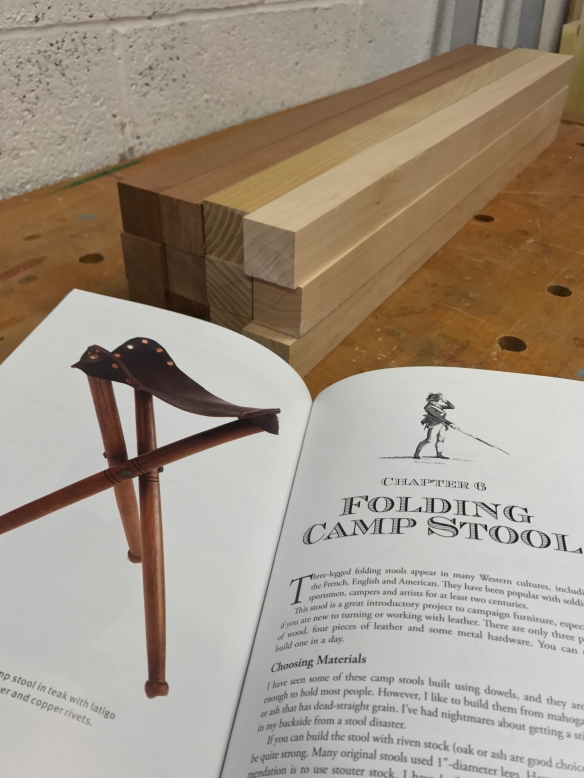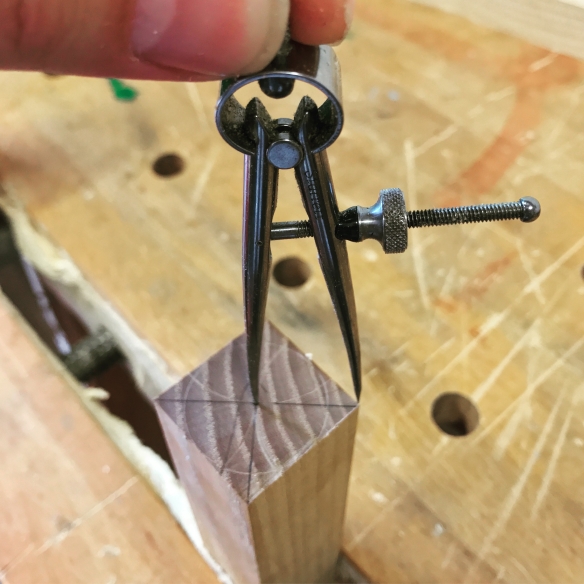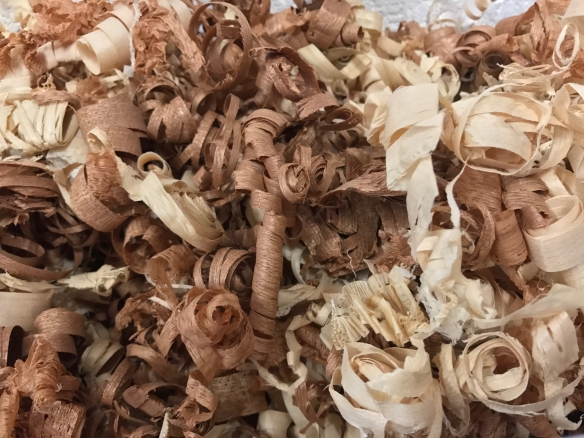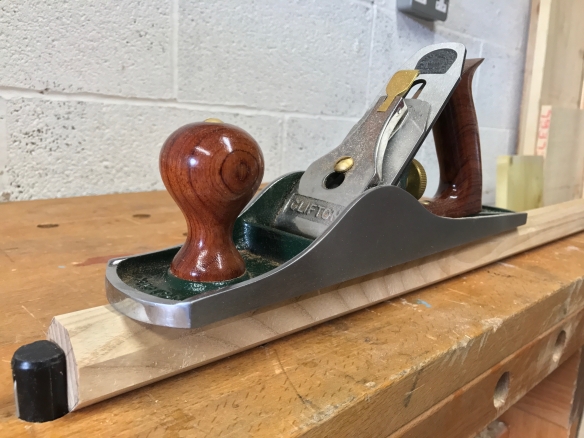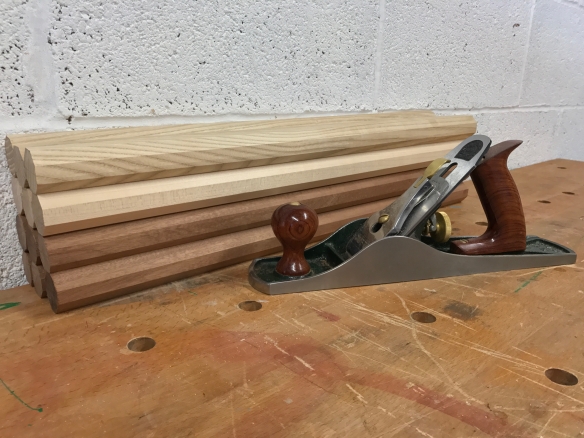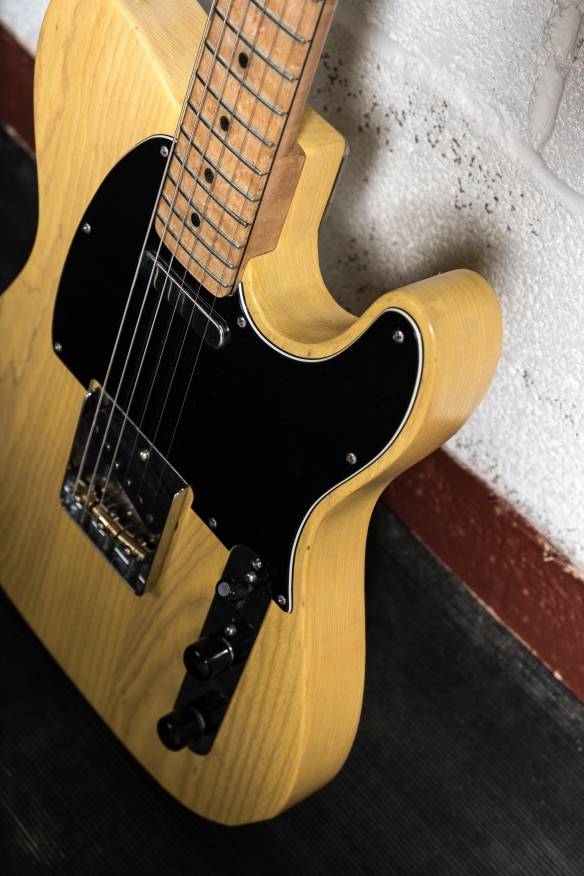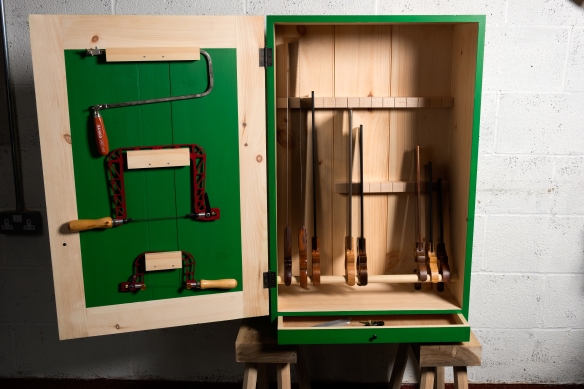In the course of researching for The Life and Work of John Brown, I’ve had the privilege to examine a wide variety of Welsh stick chairs including examples by John Brown and Chris Williams, as well as a variety of historic chairs held in the collection of the St Fagans National Museum of History (including the chair used for the cover image of John’s Welsh Stick Chair book). The chairs I’ve looked at in person have then been supplemented by those photographed in Richard Bebb’s comprehensive survey of Welsh vernacular furniture. I’ve looked at a few Welsh stick chairs now.
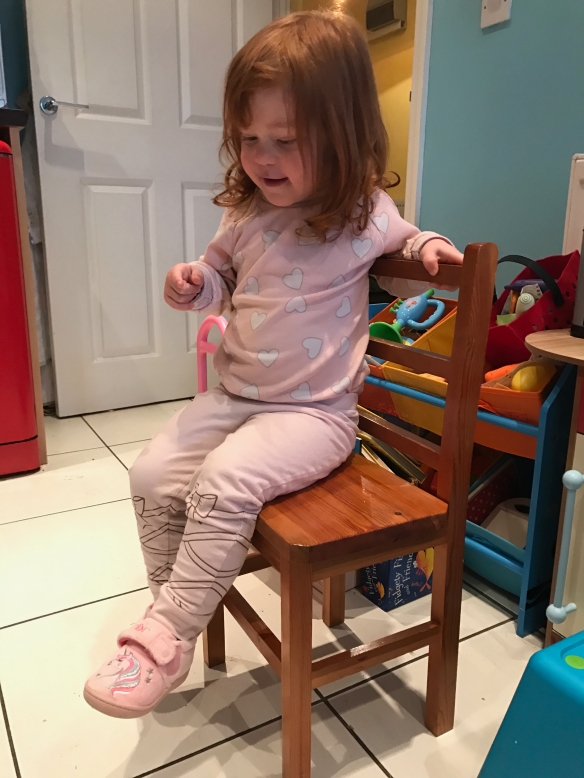
The Apprentice sitting on the chair my grandfather made for me some 32 years ago.
Vernacular forms are rarely homogenous – regional tastes vary, together with the timber available to the makers, not to mention the skill levels of the makers themselves. There may even be technological changes which impact construction methods over time. And all of this goes double for a chair making tradition that spans hundreds of years. The historic examples Chris Williams and I have examined have demonstrated a range of techniques and styles, emphasising that the Welsh stick chair tradition was vibrant and constantly changing. Some of those early chairs have lodged themselves at the back of my mind for some time – an itch demanding to be scratched. Scratching that itch requires further research, both in terms of closer examination of some of the chairs (as well as other contemporaneous examples), and building them at my workbench. This is a long term project, and I’ll writing about the research and building the chairs as I dig deeper into it.
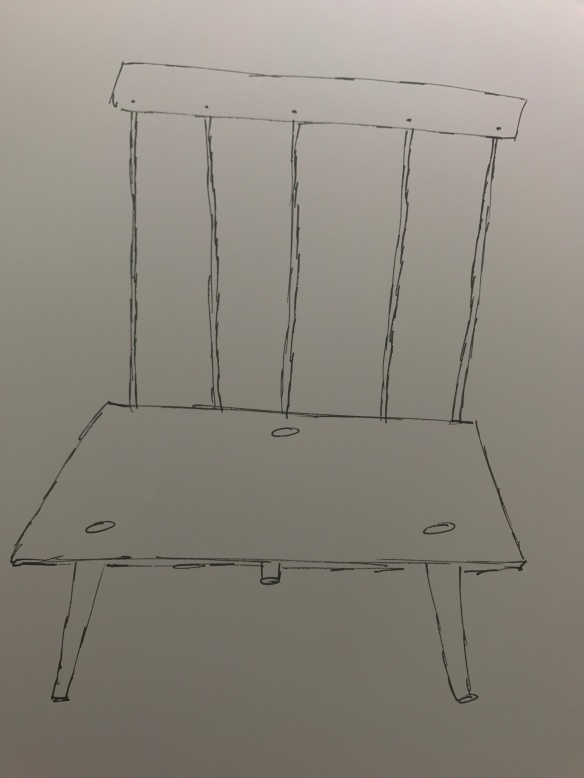
A 90 second sketch of the Apprentice’s stick chair. Hopefully the comb won’t be as wonky on the finished piece!
One of the chairs that caught my eye was a dainty child-sized stick chair from the late eighteenth century, held in the collection at St Fagans. This five-stick chair had an unusual trapezoid shaped seat and three tapered legs, topped by a very gently curved comb. I’ve spent months trying to shake this chair out of my head, and finally had to accept that the only way to do so would be to built it. A plan began to form. When I was three or four, my grandfather built me a desk and chair set. This set, which remains to this day at my parents’ house, was a constant feature of my childhood and I spent countless hours sitting at the desk drawing and playing. With the Apprentice’s birthday on the horizon later this summer, I got to talking to Dr Moss about the stick chair rattling around my head, and about my memories of the desk and chair I’d had as a child. We agreed that an excellent birthday present for the Apprentice would be her own stick chair to go in the reading corner of our lounge, next to my Chesterfield arm chair. The Apprentice adores books and reading, so this seemed like a natural gift. Hopefully in years to come it will mean as much to her as the chair and desk my grandfather built means to me.
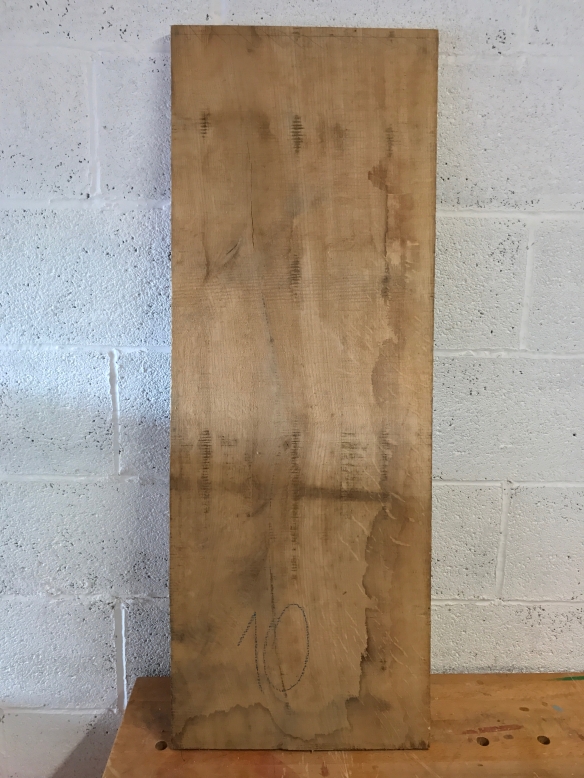
This large oak board is left over from the Policeman’s Boot Bench, and will provide the seat, sicks and comb of the Apprentice’s stick chair
With the very kind help of one of the furniture conservators at St Fagans, I now have a detailed set of dimensions for this chair, in addition to the notes and photographs I took during my last field trip. This weekend I marked the conclusion of another trip round the sun, and the focus for the bank holiday is on family celebrations and a much needed get-away with Dr Moss. But no birthday would be complete without a brief moment of workshop time, and so last night I broke down the stock for the Apprentice’s stick chair. Rummaging through my scraps pile located a large piece of oak left over from the Policeman’s Boot Bench which will provide the seat, comb and sticks. Further digging found some oak thick enough for the three legs. A few minutes on the saw benches with my Disston D8 and Skelton Panel Saw was all it took to harvest the components, which I will leave to acclimatise for a week or so while I finish up the campaign stools. Once the campaign stools are wrapped up I will build the Apprentice her stick chair in time for her birthday. This should be a fun build!
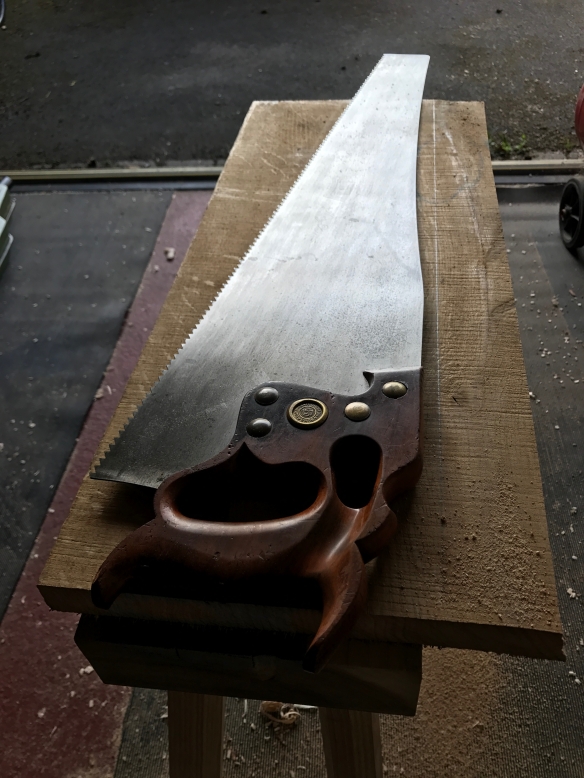
This part of the process never gets old – my 1900 era Disston D8 and the staked saw benches.

